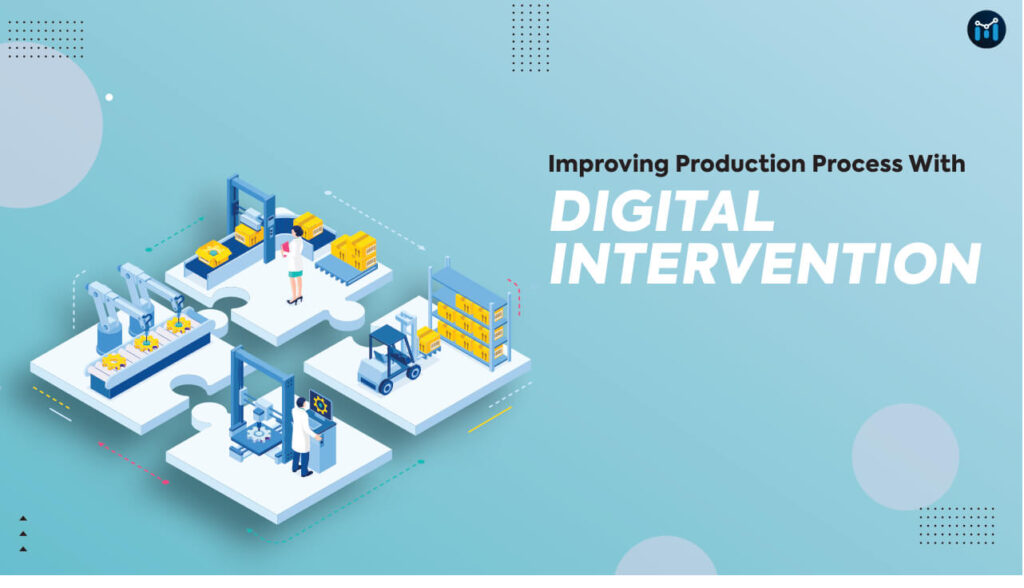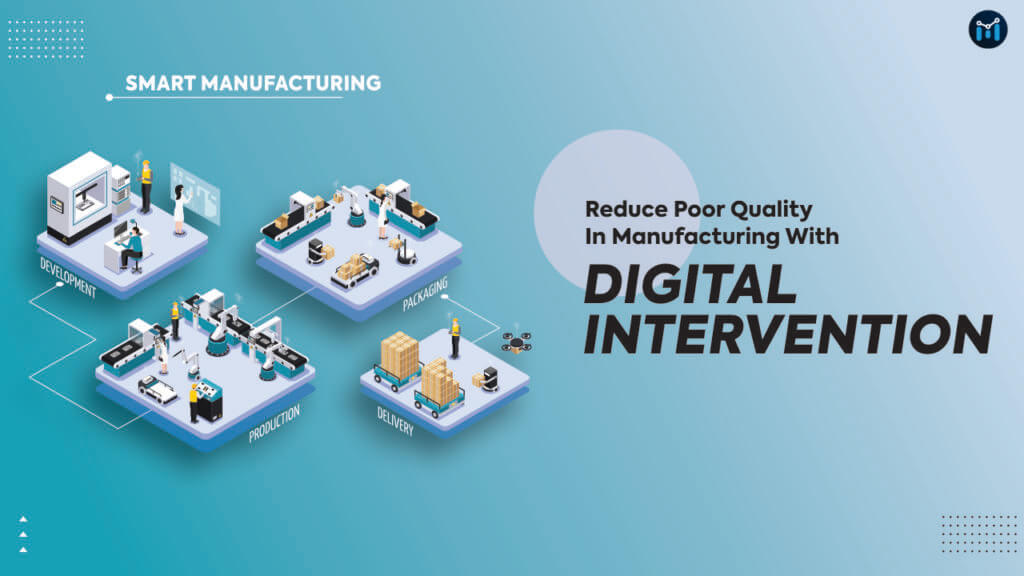Every organization is constantly under pressure to curb their COPQ (Cost of Poor Quality) while enhancing their revenues. Especially for manufacturing companies that often face loss due to defective products, thus reducing COPQ becomes a necessity. COPQ is a metric that quantifies the financial impact of poor quality in manufacturing processes. MES, or Manufacturing Execution System, can play a significant role in reducing COPQ.
As per Dr. Joseph Juran’s research, the cost of poor quality in most of the companies is 20% – 30% of sales. Consequently, the COPQ becomes equivalent to the value of net profit.
But this is not the only reason why you should care about reducing COPQ; there are more to it.
As you read further, you will learn about how it impacts a business and how digital intervention can prevent it. But before that, let us know the different cost components of COPQ.
What are the cost components that comprise COPQ?
The cost of poor quality occurs in two basic scenarios. First, if an error or defect is detected prior to the delivery to a customer. The second is when a product or service reaches the customer and is rejected. In both cases, the components remain the same.
Here is the list:
- The cost involved in processing scrap and rework.
- The cost of resources wasted on making scrap or rework.
- The cost of worker’s time and effort wasted in making poor quality products.
- The cost of direct and indirect material used in scrap.
- The cost of electronic and mechanical energy wasted in producing unusable products.
- The cost of addressing warranty claims.
What are the consequences of COPQ?
When scrap and rework enter the production’s planned sequence, they badly impact the entire production process. Here is the list of consequences:
- The issue begins with wastage of capacity and delays in planning.
- It demands overtime, as workers have to rework to replace the scrap in the shortest possible time to cover the loss.
- Employees have to put additional time and effort to identify the root cause, develop a corrective plan, and a preventive action plan to avoid any such possibility in the future.
- It severely damages the brand image that takes years to build.
- The company has to work hard to repair its tarnished brand image and to restore customer’s trust by addressing customer complaints.
- It increases employees’ health and safety risk issues.
- The company has to cope-up with the fluctuations in the demand of workers at the production site to process the scrap and rework.
How to reduce COPQ by digital intervention?
If you are aiming to reduce COPQ, you need solutions that could guide you in delivering the highest quality products.
Through the digitization of manufacturing units by using Manufacturing Execution System , you can maximize the frequency of quality product manufacturing, while combating the factors that cause COPQ. Here are a few solutions that advanced production-based companies have adopted:
 1- Manufacturing ERP Solution
1- Manufacturing ERP Solution
ERP in manufacturing plays a vital role in managing the complexities in modern product manufacturing and maintaining product quality.
One of the very essential features of the ERP system is its built-in quality assurance features that control a company’s product quality, capture the non-compliant measures, and implement corrective measures. Take a look at some of its key quality control functions:
- It ensures that the materials, products, and procedures are visible to all team members. This way the procedure is monitored and implemented or created as per the pre-defined plan.
- There are features to set up automated audits to verify that if the incoming raw materials match the agreed-upon quality standards.
- ERP software collects data from different departments of the manufacturing companies and creates a database. It helps the ERP tool to ensure that the supply chain teams are using the same key performance indicators (KPI) and procedures.
- The same ERP database is used to identify the issues. Moreover, multiple players can work together on the same platform to develop solutions.
- ERP solutions also help manufacturers to respond quickly to the production issues and minimize the impact, using recall management tools. The tools identify the affected lots and shipments, the type of recall, and the causes behind it. The details include the data about supplied defective products, supplier details, remaining affected stock, as well as the call lists for CRM and sales teams to reach out.
With ERP solution, you can maintain industry standards, quickly uncover issues, and respond to recalls the moment it is noticed.
Also, apart from this our blog on Ground-Breaking Benefits Of AI And ML In Manufacturing Industry , will give more information on AI & ML as well, please have a look
No wonder why manufacturing companies are the #1 users of ERP software.
2- Predictive Device Maintenance Solution
Unexpected machinery failure or defective product delivery are the challenges that manufacturers face frequently. In recent years, AI and machine learning have transformed the way manufacturers are improving product quality.
Nearly 60% of manufacturers are using AI and ML-powered predictive solutions to improve product quality by detecting the fault in the machinery before it causes defects in the production lots. With the technology, they have also successfully achieved greater production speed.
The AI and ML-powered predictive solutions for manufacturing companies predict when machinery requires maintenance services.
The technology has modernized the manufacturing industry by allowing them to opt for device maintenance on time and avoid possible equipment issues.
The AI based tools work on the principle of sound and vibration analysis. It detects machine failures by deeply analyzing its sound and vibration, even under the case when the noise is not audible.
The predictive maintenance solutions combine non-invasive sensors, machine learning algorithms, and connected assets for extensive frequency analysis. They work together to recognize failing components at an early stage before they become a major issue.
The early warnings may include high RPMs and oil pressure or excessive fuel usage. The detailed analysis also reports about the exact location of the fault, the type of fault, and its timing.
Moreover, it provides the information related to the internal condition of the equipment in detail, providing a complete grip on overall product quality control and maintenance cost.
Predictive device maintenance solution also keeps maintenance records, which can be archived and accessed whenever needed.
These are automated solutions and are custom designed as per the factory’s individual needs. According to the machinery used, users are notified when the spare parts need replacement or the device demands repairing.
AI-enabled predictive maintenance solutions bring automation across your manufacturing processes to reduce the time and effort required to maintain product quality.
You must include AI solutions in your manufacturing routines to prevent defects in your products and reduce COPQ in a production line.
3- Intelligent Monitoring System
Another solution to detect a fault in the machine is a computer vision-aided system that runs on AI and ML algorithms to detect the differences from the usual outputs.
It is connected with a CCTV camera to track machine utilization, cycle time, and shift productivity. ML algorithm converts video into data that users can access through their mobile app or web console in real-time.
The moment the system detects the poor quality of the end-product, it immediately triggers an alert on the app to allow the employees’ team to respond to it and fix it within minimum time.
The data on the app also provides insights and analytics to enable decision-makers to discover the areas where they are losing productivity and find a solution to manage their production process.
Hence, the key benefits of an Intelligent Monitoring System include:
- Machine utilization monitoring.
- Cycle time and deviations observation.
- Alerts in case of machine outages.
- Close watch on “Changeovers” b/w shifts or change in job-work.
- Workers’ efficiency tracking during shifts.
4- Manufacturing Execution System
In order to curb COPQ, having a thorough idea of product production can be a great help. Manufacturing execution system (MES) is one such solution to track and document the transformation of raw materials to finished goods.
This is a computerized system used widely in the manufacturing industry to gather information. It connects multiple plants, sites, and vendors’ live production information to create an informative database for analysis.
Also, it can be integrated easily with enterprise business applications to provide complete visibility and control of the manufacturing process.
As a result, manufacturing decision-makers can easily understand the current conditions on the plant floor and find ways to optimize production and processes across the enterprise.
With Manufacturing Execution System key decision-makers in companies can:
- Visualize production and get better control over factory management
- Improve productivity of all employees
- Evaluate each employee transparently
- Minimize blind spots
- Get intelligent repository of entire records
Please read more on Role of technology in improving Production and Inventory Management for better outcomes.
 Summary
Summary
For manufacturing companies, enhancing quality levels and reducing COPQ is a massive challenge.
However, with digital intervention, production-based companies can succeed to some extent. The digital solutions given above help you streamline the production inspection process and automate quality audits.
The idea is to investigate ways to catch defects early in production. If the defects are found later in the product lifecycle, it would be more expensive to manage and would create complex supply chain challenges.
Early detection will prevent the consequences that ignorance might bring.


 1- Manufacturing ERP Solution
1- Manufacturing ERP Solution Summary
Summary


